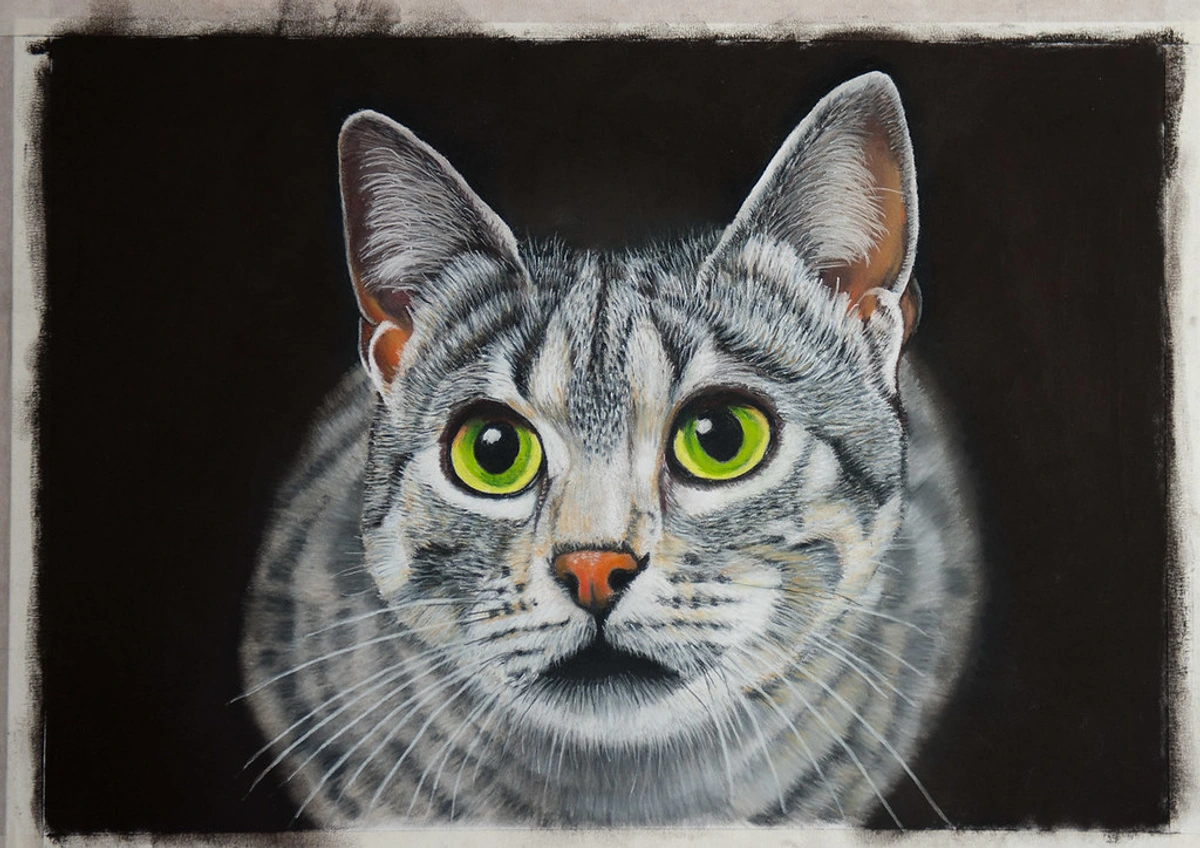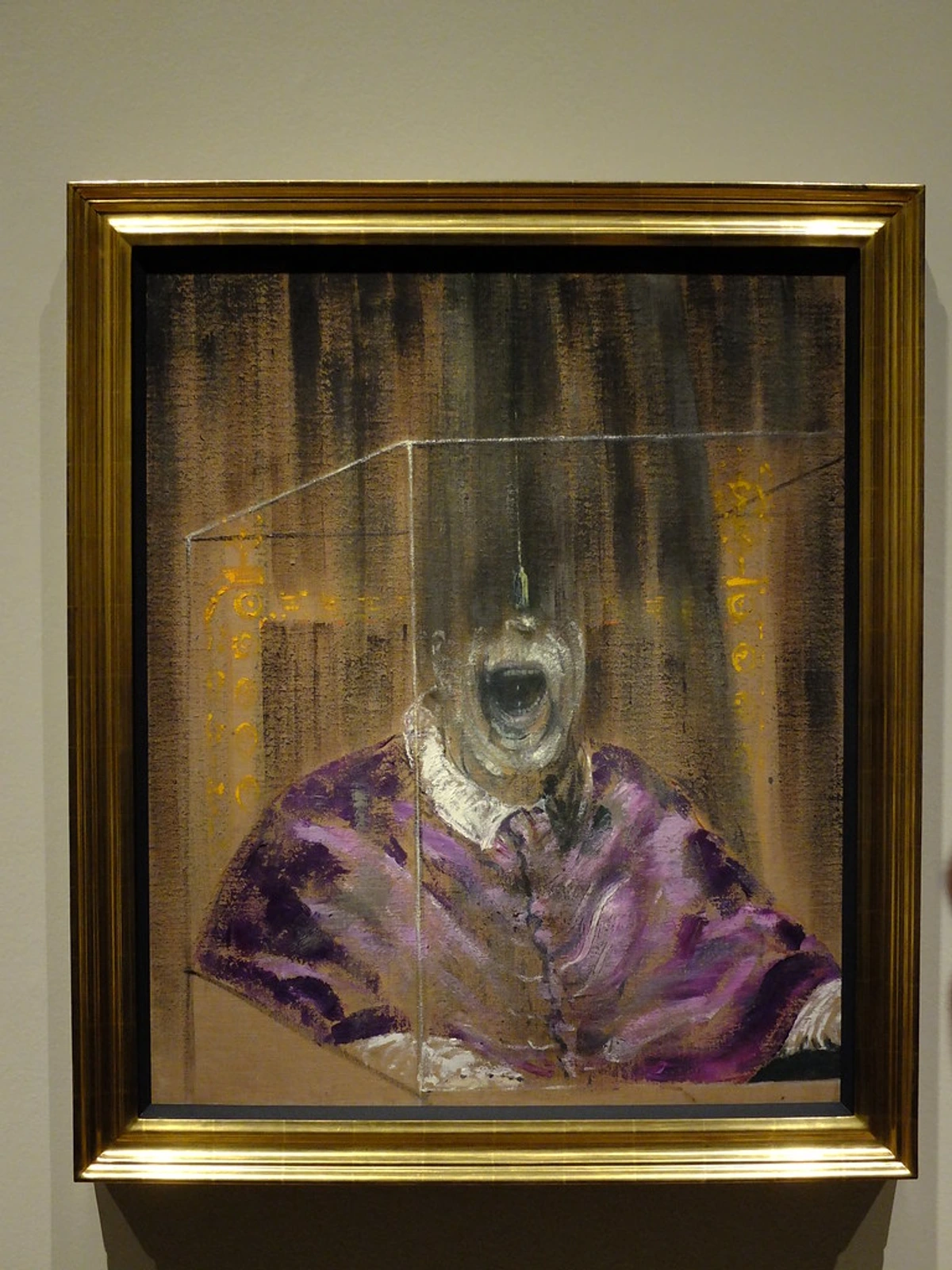
Holbein vs. Winsor & Newton Oil Paint: The Artist's Ultimate Deep Dive
Unlock your perfect palette: a definitive comparison of Holbein Artist Oil vs. Winsor & Newton Professional Oil Colour. Explore pigment, consistency, drying, and ideal uses for lasting art. Your ultimate guide.
The Ultimate Showdown: Holbein Artist Oil vs. Winsor & Newton Professional Oil Colour – A Definitive Guide for Artists
Are you, like me, often staring at a bewildering array of oil paint tubes, grappling with that fundamental question: which one will truly bring your vision to life? It’s a choice that can genuinely shape an artist's entire creative process, a decision that feels less like choosing a product and more like selecting a master instrument. Both Holbein Artist Oil and Winsor & Newton Professional Oil Colour are exceptional, but with profoundly different voices, each waiting to amplify a distinct artistic song.
Believe me, I've spent countless hours in my studio, tubes laid out, wrestling with this very dilemma. For an artist obsessed with texture, depth, and the very soul of a painting, these nuances aren't just details; they're everything. So, let’s stop staring at our tubes in indecision and dive deep, exploring every facet of these remarkable paints. We'll uncover which one truly sings for your artistic voice, helping you make an informed investment in your creative journey. And for a broader perspective on the mediums available, my guide on the definitive guide to paint types for artists is always a good starting point.

The Contenders: Two Pillars of the Art World with Revolutionary Legacies
Before we dive into the nitty-gritty of pigment and poppy oil, let's properly introduce our two heavyweights. These brands aren't just paint manufacturers; they are foundational pillars of the art world, each with a rich history that has profoundly influenced how artists create. Knowing their story isn't just interesting trivia; it helps us understand the unique DNA encoded in every tube, the very ethos behind their distinctive characteristics.

Holbein Artist Oil: The Japanese Whisper of Refinement and Innovation
From its inception in Japan in 1900, Holbein has cultivated a reputation as a master of meticulous craftsmanship, artfully blending traditional Japanese aesthetics with Western art principles. For many Western artists, Holbein has felt like discovering a hidden gem, an "enigma" often passed by word of mouth, a delightful departure from the usual suspects. This isn't accidental; their focus on exceptionally fine materials and nuanced palettes sets them apart. Think of the delicate balance in Japanese art, where precision meets expressive fluidity – that’s the spirit I often sense in Holbein paints. Their paints are revered for their unparalleled texture and stunning pigment load, a direct result of their relentless pursuit of perfection through processes like triple-milling. I still recall the first time I squeezed out a tube of Holbein, a vibrant Cadmium Yellow. It possessed a unique, almost living fluidity, a "silkiness" that surprised me. It wasn't just paint; it was an experience, like handling a finely ground jewel suspended in liquid light.

Winsor & Newton Professional Oil Colour: The Dependable British Titan and Art Movement Catalyst
Ah, Winsor & Newton Professional Oil Colour – and yes, that "Professional" designation is absolutely critical. This brand has been a steadfast companion in my studio for as long as I can remember, a reliable anchor. Their legacy stretches back to 1832 when Henry Newton and William Winsor truly revolutionized artists' materials. Imagine, it was W&N who introduced collapsible tubes for oil paints in 1840 – a seemingly simple innovation that fundamentally changed how artists could paint en plein air. This wasn't just a product launch; it fostered entire art movements like Impressionism, allowing artists like Monet, Renoir, and later even Cézanne to leave the confines of the studio and capture fleeting light and atmosphere directly from nature. It was a liberation for the creative spirit, transforming painting from a studio-bound endeavor to an immediate, outdoor experience. For comprehensive guidance on setting up your artist's arsenal, my essential oil painting supplies for beginners guide offers further insights.
Holbein Artist Oil: The Smooth Operator with a Gentle Hand
When I reach for a Holbein tube, it's usually because I'm craving a particular kind of fluidity and intensity that feels almost effortless. These paints are, hands down, some of the most buttery and smooth oil paints I've ever experienced, possessing a unique silken viscosity that distinguishes them immediately. It's like the difference between finely sifted powdered sugar and coarse granulated sugar – both are sweet, but one melts on the tongue with incredible grace.

The Power of Triple-Milling: Unparalleled Pigment Load
Let's talk about the heart of any paint: its pigment concentration. Holbein oils are legendary here. What does "seriously impressive" actually mean for your brush? It means a little goes a very, very long way. You get vibrant, deeply saturated color without needing thick applications. This intensity is the direct result of their meticulous triple-milling process, where pigments are ground not just once, but three times (and sometimes even more for particular pigments). This isn't just about smoothness; it creates the smallest, most uniform particle size, which leads to superior dispersion, incredible tinting strength, and that dense, luxurious cream-like consistency. It's like pulverizing a diamond into the finest dust imaginable – the inherent brilliance is magnified through its infinitesimal particles.
Poppy Oil's Gentle Touch: Non-Yellowing Brilliance and Elastic Film
Their preferred binder is often poppy oil, which is a game-changer, especially for certain palettes. Unlike traditional linseed oil, poppy oil resists yellowing significantly over time. Why? On a chemical level, poppy oil contains fewer conjugated double bonds compared to linseed oil, making it less prone to oxidation and the associated yellowing that can plague delicate whites, cool blues, and vibrant light hues in your finished work. This means fewer headaches for artists working with delicate whites or trying to maintain cool color harmony over time – a significant emotional and practical win. Beyond anti-yellowing, poppy oil also contributes to the paint's unique flow and a slightly more elastic, less brittle drying film. This high pigment load, combined with poppy oil, makes Holbein particularly fantastic for glazing techniques where transparency, luminosity, and a deep, glowing color are paramount.
Silken Viscosity: The Art of Effortless Flow and Extended Working Time
Their consistency truly sets them apart. This isn't just smooth; it's a silken viscosity, a feel that's dense yet so effortlessly spreadable. It's almost like a thick, luxurious custard. This quality allows the paint to glide off your brush, making subtle transitions and delicate details feel incredibly intuitive. Think about achieving a nuanced sfumato effect, or working quickly and seamlessly with alla prima painting where wet-on-wet blending is key. Holbein merges colors almost magically, creating those ethereal shifts in tone that masters like Vermeer perfected. The paint feels like it melts into itself, giving you an extended open working time to chase those elusive blends.
Due to its poppy oil binder, Holbein paints generally exhibit a slower drying time compared to linseed-based alternatives. For me, this is often a blessing! It provides a significantly longer open working time, sometimes days, which is invaluable for intricate blending, subtle transitions, and making those crucial adjustments as a piece evolves. However, for artists who prefer rapid layering or opaque builds, this does necessitate more patience between coats. For those particular about the precise timing of their layers, this slower dry can be a deliberate choice, much like a chef choosing a longer marination for richer flavors.
Now, that unique, buttery consistency can be a double-edged sword. If you’re like me and sometimes crave the tactile joy of thick, heavy impasto painting textures straight from the tube, Holbein might surprise you by simply flattening out like a sigh. I've had moments of chagrin attempting a sculptural peak, only to watch it gently surrender. While you can certainly thicken them with suitable painting mediums designed for texture – think impasto gels, wax mediums, or even painting resins – it adds an extra step and might not give you the same immediate, satisfying structural integrity a firmer paint provides. This is a vital consideration for your textural approach, as you're essentially building texture onto the paint, rather than the paint being the texture itself.

Winsor & Newton Professional Oil Colour: The Dependable British Titan with Robust Body
Winsor & Newton Professional Oil Colour has been a steadfast companion in my studio for as long as I can remember, a reliable anchor. They are the brand I often recommend without hesitation when someone seeks a solid, all-around performer. If you're serious about your oil painting journey, investing in professional-grade materials like these from the outset is a foundational step.

Robust Body, Enduring Richness, and Dependable Drying
Winsor & Newton's pigment load is nothing short of excellent, delivering strong, rich color that resonates deeply. While specific Holbein hues in certain transparent ranges might feel marginally more intense, W&N Professional paints are unequivocally professional-grade, offering consistent, beautiful results with impressive opacity and formidable tinting strength. Their meticulous milling ensures consistent particle size across their vast palette, translating to utterly predictable performance. This is critical for artists who demand reliability and don't want any surprises when mixing or layering.
W&N primarily employs linseed oil or safflower oil as their binders. Linseed oil, the traditional choice, provides exceptional film strength and durability, forming a resilient, long-lasting paint film. Its slight yellowing over time is a known characteristic, particularly in whites or very light tints, but its robust film strength and quick, consistent oxidative drying make it a favorite for many. Safflower oil, often found in lighter colors and whites, offers less yellowing than linseed, bridging the gap between linseed and poppy oil characteristics. It typically dries a bit slower than linseed. A select few W&N whites may also feature a touch of walnut oil for further anti-yellowing properties and a smoother feel, though linseed remains the workhorse for its overall film strength. This strategic use of different oils allows W&N to balance archival quality with specific handling characteristics across their diverse palette.
The consistency of W&N Professional oils is decidedly firmer, possessing a more traditional "tooth" than Holbein's silken glide. What exactly is "tooth" in this context? Imagine dragging a soft charcoal stick across a sheet of smooth paper versus a sheet of rough, cold-press watercolor paper. The latter offers a satisfying resistance, a tactile feedback that allows for intentional mark-making and holds the material. That's the "tooth" of W&N – a robust body that ensures the paint holds its shape exceptionally well, making it ideal for direct painting and building palpable texture. If you want your brushstrokes to stand proudly, exactly where you put them, or if you relish the resistance of a quality oil that communicates with your hand, W&N delivers with authority. This firm body also makes them an absolute dream for using a palette knife to lay down bold, sculptural marks and build substantial impasto painting layers. I distinctly remember an entire afternoon spent building the churning surface of a stormy sky with W&N; the peaks of paint held their defiant form, just as I intended, capturing the raw energy. It truly felt like I was sculpting with color, much as masters like Van Gogh or Lucian Freud might have approached their canvases. While inherently firmer, they still blend beautifully, especially when you thoughtfully introduce painting mediums to achieve more fluid applications.
A Universe of Hues with Enduring Archival Assurance
Winsor & Newton boasts one of the most extensive and thoughtfully curated color ranges available globally. For artists who prefer to select specific shades over mixing everything from primaries, this is an undeniable advantage. Their palette includes revered historical pigments like the rich, earthy Indian Red and Vermilion (often now Pyrrole or Cadmium Red equivalents), vibrant modern hues such as Transparent Yellow, and an unparalleled selection of natural earth tones – Raw Sienna, Burnt Umber, and various Ochres – truly offering a universe of choices for any subject. The prevalence of single-pigment colors in their range is also crucial for clean, predictable mixing, guaranteeing true and vibrant results without unwanted muddiness. They are renowned for their rigorous testing for lightfastness and permanence, adhering strictly to ASTM (American Society for Testing and Materials) standards. These are not just guidelines; they are an international benchmark, providing robust assurance that your treasured artworks will resist fading and degradation over time. This unwavering dedication to archival quality gives me immense peace of mind that my efforts, and yours, will endure for generations.

Due to their primary use of traditional linseed oil binders, Winsor & Newton oils dry at a moderate and remarkably consistent rate. This predictability is incredibly valuable for planning intricate layered compositions, allowing you to reliably schedule your painting sessions and avoid unwelcome surprises. It's like having a dependable clock in your studio, allowing you to confidently plan your next move. While I've often leaned on painting mediums a bit more with W&N to achieve the ethereal, almost effortless blend I crave, that firmer body is precisely what many artists adore about them! It grants exceptional control over texture and enables very intentional mark-making, allowing you to build up visible brushstrokes with the authority of a Rembrandt or create bold, assertive applications that truly convey a painterly presence.
Understanding Pigment Types, Hues, and Toxicity: A Professional's Perspective
Both Holbein and Winsor & Newton offer a broad spectrum of common pigment types, including Cadmiums, Cobalts, various Earth Tones, and modern synthetics like quinacridones, perylenes, and dioxazines. These modern pigments have significantly expanded the artist's palette with increased vibrancy, lightfastness, and transparency. Holbein's meticulous milling often yields Cadmiums that feel exceptionally smooth and vibrant, while their unique "Opera" (a quinacridone magenta) is a standout for its almost fluorescent intensity. Winsor & Newton, on the other hand, provides an incredibly vast array of traditional earth tones (e.g., Indian Red, various Umbers, Ochres, Siennas) and historical pigments, often maintaining a slightly higher body for these, which is fantastic for traditional layering techniques.
The Nuance of "Hues"
While both brands offer superb Cadmiums, like Holbein, W&N also provides excellent "hues" (alternative pigments) for artists seeking similar color profiles without heavy metals or at a lower cost. A "hue" is a pigment substitute that mimics the color of a traditional pigment but is made from a different chemical composition. For instance, "Cadmium Yellow Hue" will visually resemble true Cadmium Yellow but might be made from a blend of other yellow pigments. Manufacturers strive for close matches in color, opacity, and lightfastness, but a hue might have subtle differences in tinting strength, handling, or permanence compared to the genuine pigment. This is an important distinction for artists who prioritize specific handling characteristics or prefer to avoid certain heavy metals in their palette.
Toxicity and Safe Studio Practices
On the topic of heavy metals, it's essential to briefly address pigment toxicity. Certain traditional pigments, such as true Cadmiums, Cobalts, and Lead White, contain heavy metals that can be toxic if ingested or inhaled. This is why brands offer "hues" as safer alternatives. Regardless of your pigment choice, adopting proper studio practices is crucial: ensure good ventilation, avoid eating or drinking while painting, never put brushes in your mouth, and wash your hands thoroughly after each session. These simple precautions allow you to work safely with all professional-grade materials, protecting your health while pursuing your art.
The Crucial Distinction: Professional vs. Student Grade Oil Paints
If you're serious about your oil painting journey, investing in professional-grade materials like Holbein Artist Oil or Winsor & Newton Professional Oil Colour from the outset is a foundational step. While both brands offer student-grade lines (e.g., Holbein's Académie or W&N's Winton), it's vital to understand the significant differences:
- Pigment Load: Professional paints contain a much higher concentration of pure pigment. This means stronger, more vibrant colors, greater tinting strength (a little goes a long way), and better opacity/transparency depending on the pigment's natural properties. Student paints use more fillers and extenders, resulting in weaker color and needing more paint to achieve desired effects.
- Binder Quality: Professional paints use higher-quality binders (like cold-pressed linseed, poppy, or safflower oil) that contribute to the paint's longevity, film strength, and working properties. Student paints might use lesser-quality or refined oils, which can sometimes impact permanence or yellowing.
- Lightfastness & Permanence: Professional paints are rigorously tested and rated for lightfastness (resistance to fading) using international ASTM standards (ratings I and II for excellent/very good are typical). Student paints may use less lightfast pigments, meaning your artwork might fade or degrade over time.
- Handling Characteristics: The consistency and texture of professional paints are carefully crafted for specific artistic applications – whether it's Holbein's silken glide or W&N's robust body. Student paints often have a more generic, uniform consistency that may not offer the same nuanced control or textural possibilities.
While student lines are useful for practice, preliminary sketches, or large underpaintings where permanence isn't critical, for any artwork intended to endure, the investment in professional-grade materials is non-negotiable. It ensures your efforts will withstand the test of time and truly showcase your artistic vision.

Practicalities of the Studio: Packaging, Cleanup, and Longevity
In the practical realm of the studio, both Holbein and Winsor & Newton deliver on quality, often embodying their brand philosophies even in the humble tube. Their paints come in standard metal tubes, which are the tried-and-true standard for professional oil paints for good reason – they offer excellent protection against air exposure and maintain paint freshness. Proper tube squeezing technique (from the bottom up) is also key to minimizing waste and air intrusion.
Holbein's tubes often have a slightly more refined, smoother finish, and their caps, in my experience, feel exceptionally robust and secure, screwing on with a satisfying heft. This reflects their meticulous craftsmanship down to the smallest detail. Winsor & Newton's tubes are consistently well-crafted, designed for minimal leakage and optimal paint preservation. My only minor quibble, and it's truly minor, is that occasionally a W&N cap on an older tube might decide to stage a rebellion and stick stubbornly – something to note during an intense studio session when patience is thin!
When the joyful painting stops and the inevitable brush cleaning begins, both brands clean up similarly with traditional solvents like turpentine or mineral spirits, followed by a thorough soap and water wash. However, there's a subtle difference I've noticed: W&N's firmer consistency means less paint tends to migrate and cling deep within the ferrule and bristles, potentially making the initial wiping stage a touch easier, like scraping a thicker paste off a surface. Holbein's smoother, denser texture, while wonderful to paint with, might demand a smidgen more meticulous attention to ensure all its finely ground pigment is completely removed, particularly from your precious fine detail brushes. It's like ensuring every last speck of ultra-fine dust is cleared from a delicate surface.
For paint longevity and storage, both brands benefit from being stored upright, caps tightly sealed, and away from extreme temperature fluctuations. In my experience, properly sealed tubes from either brand will last for years, often decades. While some oil separation (where the binder oil seeps out) might occur over time, especially with poppy oil-based paints like Holbein, this is normal and can usually be mixed back into the paint on your palette without issue. Avoid storing them in direct sunlight or areas with high humidity, as these conditions can degrade both the paint and the tubes themselves.
Side-by-Side Showdown: Holbein vs. Winsor & Newton – The Art of Comparison
Alright, let's condense all that glorious detail onto one metaphorical palette. This is how I've come to see them stack up, a quick reference to help you weigh your options and align with your artistic aspirations. Remember, these aren't just features; they're choices that profoundly impact your creative output.
Feature | Holbein Artist Oil | Winsor & Newton Professional Oil Colour |
|---|---|---|
| Origin & Heritage | Japan (founded 1900), meticulous craftsmanship; blend of East & West aesthetics, known for triple-milling. | UK (founded 1832), pioneers of modern art materials (e.g., collapsible tubes in 1840, catalyzing Impressionism). |
| Consistency & Feel | Very smooth, buttery, unique silken viscosity; exceptionally finely milled. Dense yet effortlessly spreadable, like luxurious custard. | Medium-firm, robust body, traditional oil paint feel; excellent brush retention, distinctive 'tooth' for texture. Holds peaks and sculptural marks exceptionally well. |
| Pigment Load | Extremely high, very vibrant, luminous, a little goes a long way; superior for transparent glazes due to fine particle size. | High, rich, reliable colors; strong opacity and tinting strength. Consistent particle size for predictable mixing. |
| Binder/Oil Type | Primarily Poppy oil (superior non-yellowing for whites/cools, slightly more elastic, less brittle film due to fewer conjugated double bonds, slower oxidative drying). | Primarily Linseed or Safflower oil (linseed: traditional film strength, consistent oxidative drying; safflower: less yellowing, slower dry than linseed). Some walnut oil in specific whites. |
| Drying Time | Slower due to poppy oil; offers significantly longer open working time (days) for blending; requires patience between layers. | Moderate to consistent; predictable drying schedule, excellent for planned layering in complex works. |
| Film Strength / Flexibility | Good elasticity, less prone to brittleness over time, especially with minimal mediums. Forms a slightly more flexible film. | Excellent film strength and durability; forms a robust, resilient paint film with strong integrity. |
| Lightfastness | Excellent, rigorously tested to ASTM standards (ASTM I & II ratings for archival quality). | Excellent, extensively tested to ASTM standards (ASTM I & II ratings) with a historical reputation for permanence. |
| Color Range | Comprehensive, includes unique hues like "Opera" (quinacridone magenta) and "Irodori" series; strong selection of single-pigment colors. Offers cadmium hues and some "hues" as alternatives. | Extremely extensive, classic and modern colors, including revered historical pigments (Indian Red, Vermilion) and vast earth tones; wide range of single-pigment colors. Offers cadmium hues and some "hues" as alternatives. |
| Toxicity Consideration | Offers "hues" as alternatives to heavy metal pigments. | Offers "hues" as alternatives to heavy metal pigments. |
| Price Point | Generally higher per tube; premium market reflecting meticulous processing, unique binders, and perceived luxury. | Premium, but often slightly more accessible per tube than Holbein; widely available globally. |
| Best For | Seamless blending, luminous glazes, delicate details, alla prima for fluid application, subtle sfumato effects, maintaining pure whites/cool hues, extended working time, artists prioritizing paint 'feel' and luminosity. | Impasto, expressive brushwork, direct painting, traditional techniques, maintaining crisp edges, sculptural texture build-up, extensive palette needs, reliable layering, artists prioritizing paint 'body' and structural marks. |
| Usability for Impasto/Texture | Naturally soft, tends to flatten without mediums; requires specific painting mediums (gels, waxes) for significant texture. | Excellent for impasto straight from tube; holds peaks and sculptural marks exceptionally well, ideal for palette knife work. |
| Unique Trait | Exceptionally fine milling, unique "silken" feel, superior non-yellowing characteristics, a "hidden gem" quality that enhances luminosity. | Historical legacy, pioneering collapsible tubes, vast color range, consistently robust performance, a truly dependable "workhorse" for foundational techniques. |
Who Are They For? Tuning Your Artistic Voice and Workflow
Ultimately, the choice between these two incredible brands is deeply personal, much like a musician choosing their instrument – a Stradivarius versus a powerful grand piano. It boils down to your unique painting style, your desired outcomes, and what truly resonates with your artistic voice. Is your song a delicate, intricate melody, or a robust, rhythmic declaration? Do you sculpt with paint, or do you let it melt on the canvas like a dream?
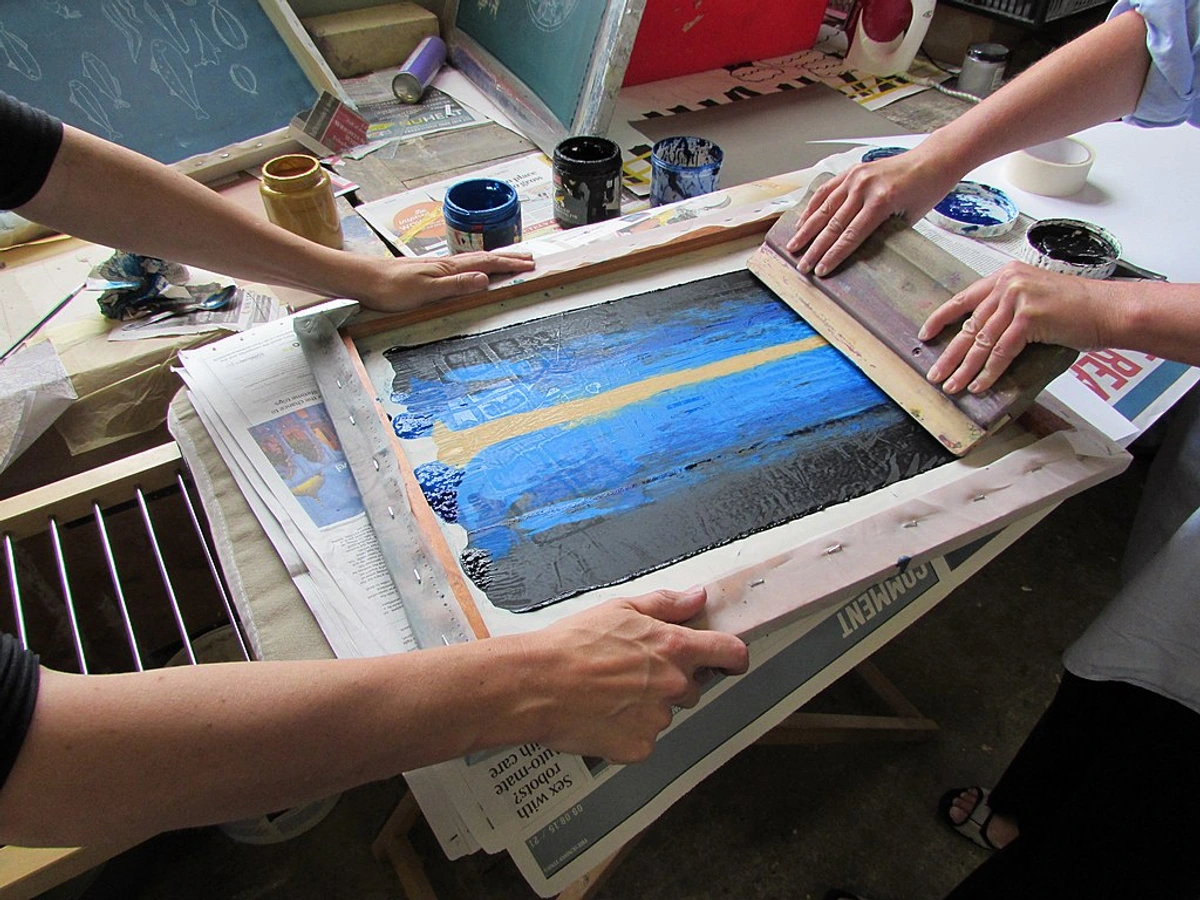
Choose Holbein if...
- Seamless Blending & Luminous Glazes are Your Priority: If you live for velvety transitions, ethereal glows, and the delicate dance of light through transparent layers (think Vermeer or contemporary realism), Holbein's silken consistency and fine pigment dispersion are unmatched. You'll find it excels at creating smooth gradations and subtle tonal shifts that almost defy detection.
- You Crave Precise Details & Fluid Application: For intricate brushwork, sharp lines, or the effortless spread of paint in alla prima painting, Holbein's fine milling and flow are a dream. It allows for a delicate touch, akin to drawing with liquid color. Its smooth, dense texture also works beautifully with softer synthetic or natural hair brushes for delicate blending.
- Non-Yellowing is Critical for Light Hues: If your palette features pristine whites, cool blues, or vibrant pastels that must retain their purity over time, poppy oil's resistance to yellowing is a significant, almost indispensable, advantage. It protects the integrity of your lightest passages.
- Extended Working Time is a Blessing: If you appreciate a longer open time for subtle manipulation, blending, and rethinking your moves over days, Holbein offers that luxurious window, reducing the pressure to rush. This allows for a more contemplative, iterative painting process.
This is the paint for the artist who values a truly unique tactile experience, exquisite blends, and intensely luminous, finely ground pigment, especially those inspired by Old Master techniques or a refined contemporary aesthetic. If you’re exploring nuanced depth in your own abstract paintings, Holbein's inherent smoothness and luminosity can offer captivating possibilities, allowing colors to merge and glow from within.
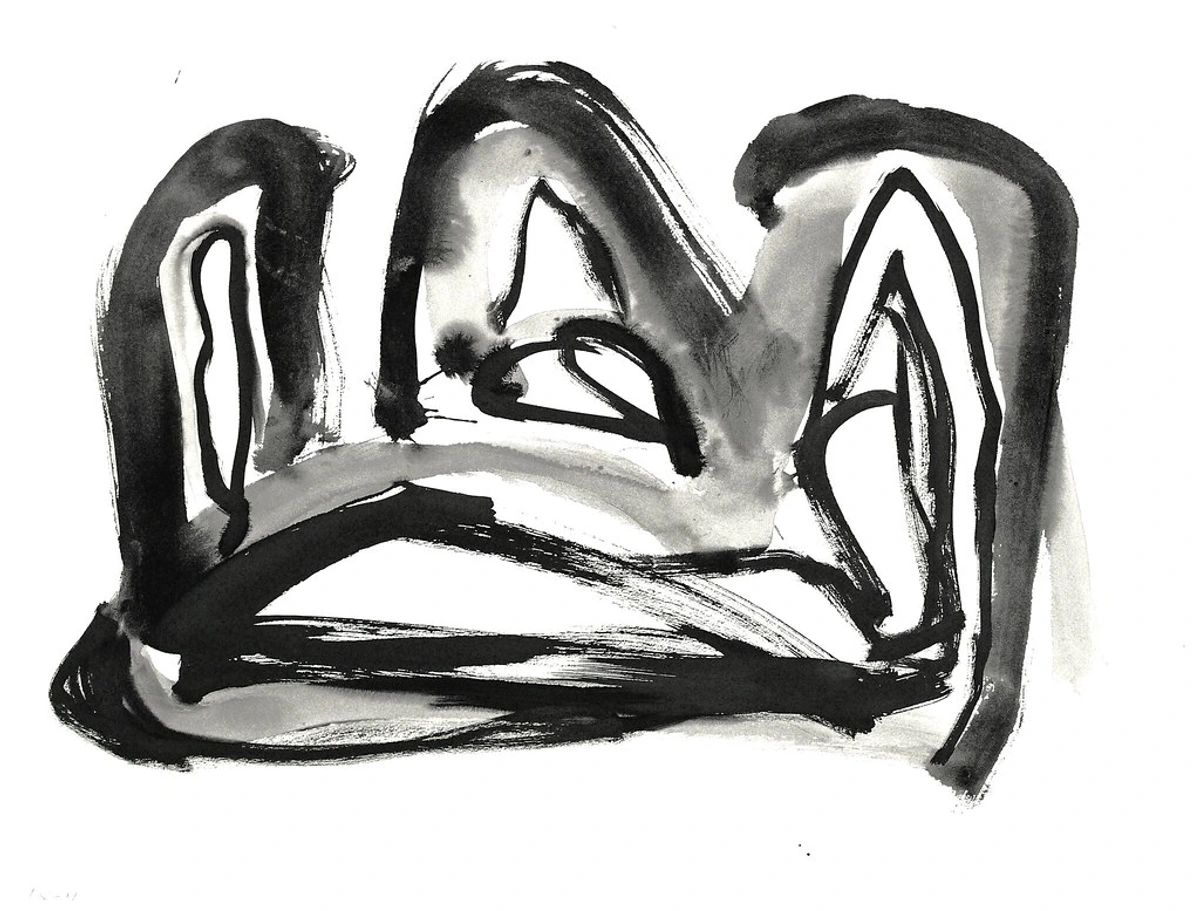
Choose Winsor & Newton Professional if...
- Expressive Brushwork & Bold Impasto Define Your Style: If you want your brushstrokes to tell a story, or you build up substantial, sculptural textures (think Van Gogh or Lucian Freud), W&N's robust body will hold its form with defiant strength. Its firmer body is ideal for stiff hog bristle brushes for texture, allowing the paint itself to become a sculptural element. You might even find yourself exploring texture in abstract art with this brand, as the paint itself becomes a sculptural element.
- You Prioritize a Broad & Dependable Palette: With one of the most extensive color ranges available, W&N ensures you'll find virtually any hue, simplifying selection and ensuring consistent results across your palette. This expansive choice reduces the need for extensive color mixing and allows you to focus on application.
- Predictable Drying Times are Essential for Layering: If your process involves planned, multi-layered compositions, W&N's moderate and consistent drying rates provide invaluable control and predictability. This allows for a structured approach to building up your painting, layer by reliable layer.
- You Work with a Palette Knife for Texture: The paint's inherent firmness makes it exceptionally suited for bold, defined marks straight from the tube, allowing for crisp edges and impressive sculptural qualities, truly embracing the art of mark-making.
W&N Professional is the steadfast choice for most traditional and contemporary oil painters who require a versatile, consistent palette and superb archival quality, especially for creating assertive, textural marks that retain their form. For serious beginners building a solid foundation, W&N Professional is an excellent investment. However, for economy, their Winton student range is a starting point, but always remember the quality difference in pigment load, binder, and lightfastness that justifies the "Professional" designation! My essential oil painting supplies for beginners offers more comprehensive guidance.
Exploring Mediums: Your Paint's Best Collaborators
The interplay between paint and painting mediums is another crucial factor that defines your painting experience. Holbein’s naturally softer consistency means it often requires minimal thinning for fluid applications. However, for significant texture, you'll definitely be reaching for heavier gels or impasto mediums, as the paint itself won't provide that structural integrity. Winsor & Newton, with its firmer body, is incredibly versatile and readily accepts a vast range of mediums designed to alter its flow, transparency, or drying time without sacrificing its inherent structure. Their incredibly popular Liquin range, for instance – an alkyd-based quick-drying medium – synergizes beautifully with W&N oils, allowing for accelerated drying, enhanced glazing effects, and maintained paint body. Other common mediums include Damar Varnish for increased gloss and depth, or additional Linseed Oil for greater fluidity and slower drying. It's truly about choosing collaborators that elevate your chosen paint's performance, understanding how each medium can either enhance or counteract the paint's natural characteristics.
My Personal Takeaway: The Symphony of Collaboration and the Joy of Experimentation
Here's my honest truth, from one artist to another: I find myself using both, often within the same piece, depending on the specific passage, the desired effect, or even just my mood in the studio. My studio is a testament to this ongoing conversation between pigment and intention. There are days when I crave the luscious, almost effortless glide of Holbein for a soft, dissolving blend, and other days when only the robust body of Winsor & Newton can satisfy my need to lay down a thick, assertive, structural mark. To me, it's not a rivalry; it's a profound collaboration.
For my own abstract paintings, where raw texture and unexpected color interactions are paramount, I frequently reach for W&N. Its ability to build resilient structure and create bold, assertive marks is perfect for a dynamic background or a striking focal point. Then, I might layer with Holbein, allowing its delicate, luminous glazes or fine details to almost melt into the surface, creating that captivating push and pull of depth and light I constantly strive for. It's a true dialogue between two distinct voices, each contributing to a richer, more complex symphony on the canvas.

It truly is like having two different, masterful instruments in an orchestra. Both are phenomenal, yet they play different, complementary roles, contributing to a richer, more complex symphony on the canvas. My ultimate advice? Don't be afraid to experiment. Grab a few tubes of each in colors you use frequently – perhaps a primary triad (Cadmium Red, Cadmium Yellow, Ultramarine Blue) and a Titanium White – and truly feel how they respond to you. Listen to their voice, and see how they can amplify yours. Because in the end, the "best" paint isn't a universal truth; it's the one that empowers you to create your best art, pushing your boundaries and allowing your unique vision to come vibrantly to life. And should you ever feel like adding a finished piece of that artistic journey to your own collection, you are always welcome to browse my art.
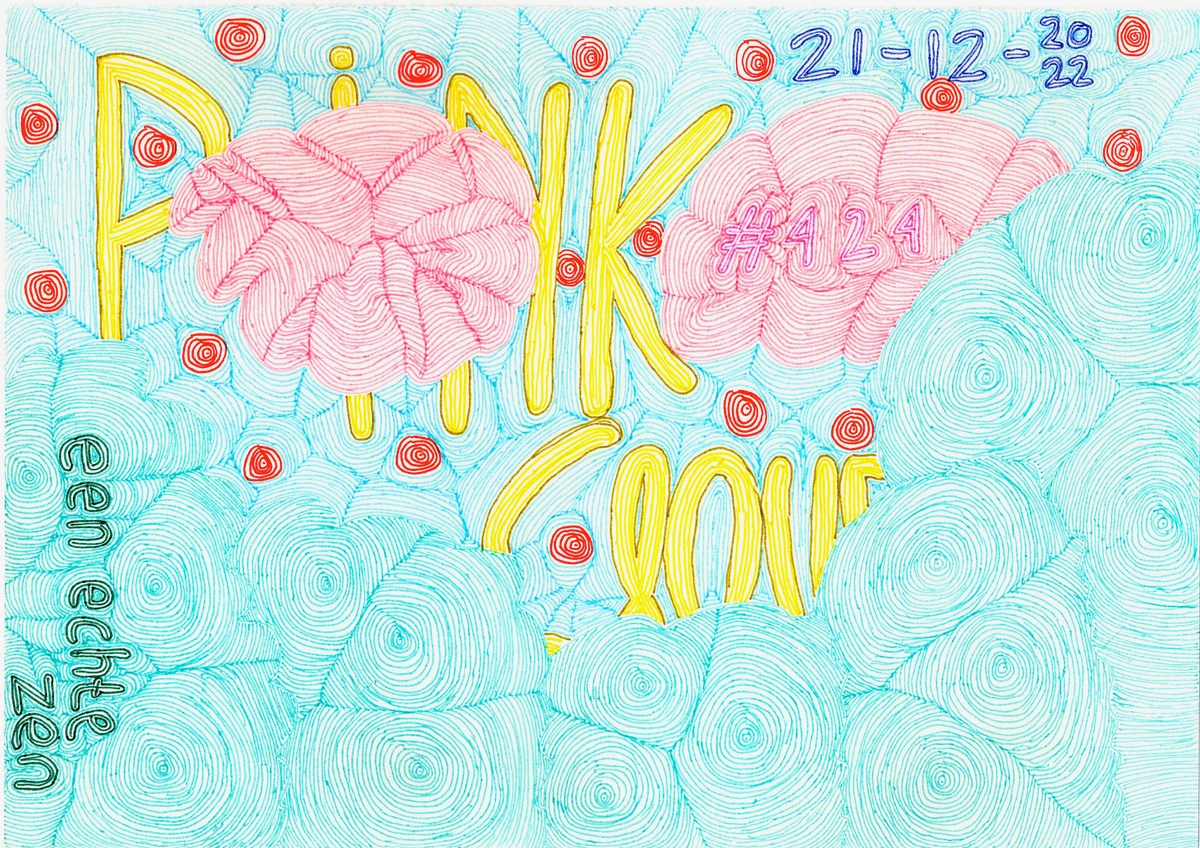
Frequently Asked Questions About Professional Oil Paints: Navigating Your Palette Choices
Here are some common questions artists ponder when navigating the world of professional oil paints, particularly concerning Holbein and Winsor & Newton. I've heard these questions in countless workshops and studio chats, and they're always worth addressing head-on.
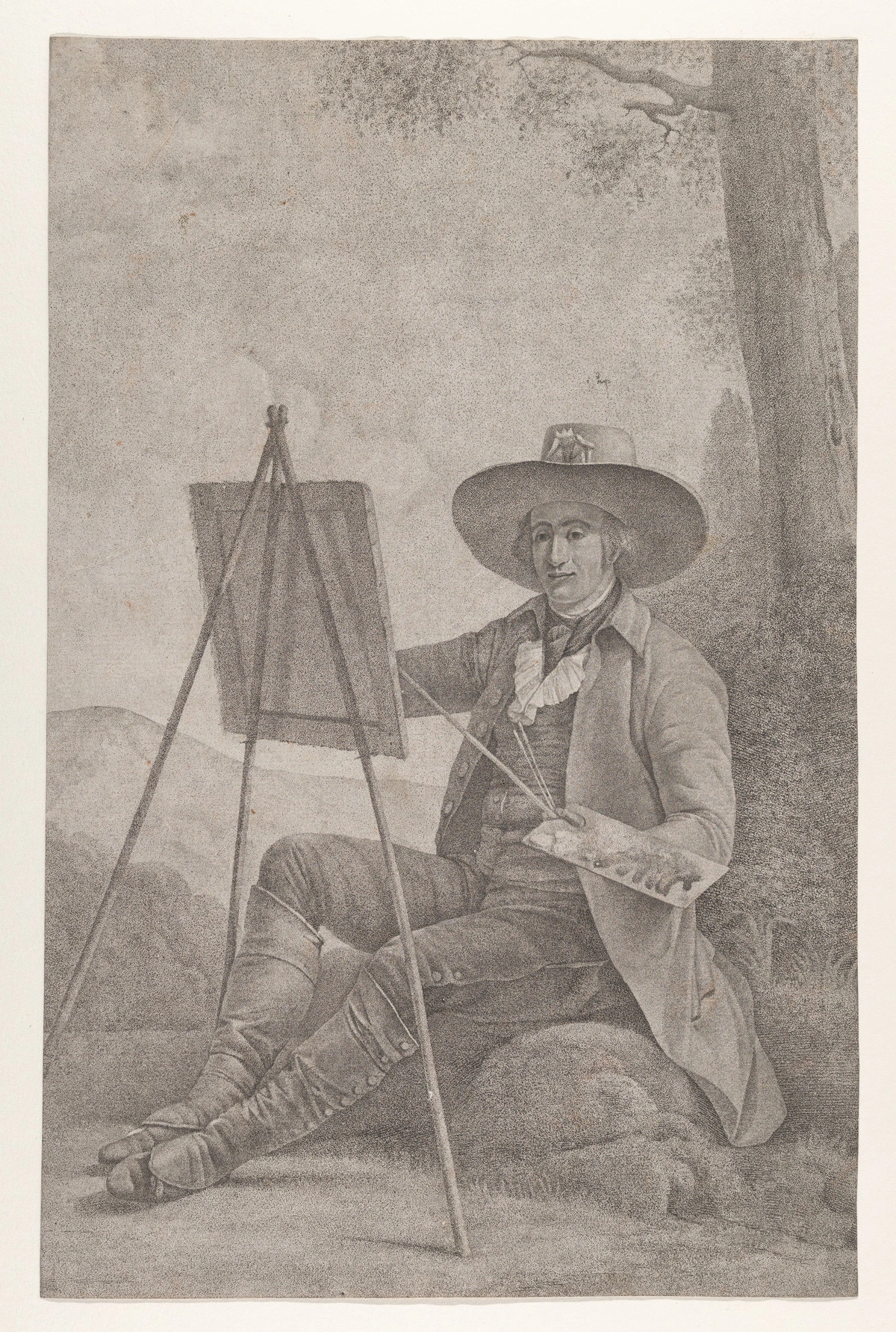
Q: Are Holbein and Winsor & Newton oil paints compatible for mixing? What about their mediums?
A: Absolutely! Professional-grade oil paints from different reputable brands are designed to be compatible. They share fundamental components – natural oils (linseed, safflower, poppy) and high-quality pigments. You can safely mix Holbein and Winsor & Newton paints on your palette, allowing you to harness the unique characteristics of both in a single painting. However, when it comes to mediums, exercise a bit more caution. While most oil painting mediums are generally compatible across brands, it's always best practice to stick to mediums from the same brand family or ensure they are explicitly labeled as universal. For instance, mixing an alkyd medium (like W&N's Liquin) with a traditional oil medium from Holbein is usually fine, but if you're using very specific formulations, a small test patch is never a bad idea. The paints themselves, though, mix like old friends.
Q: Is there a significant price difference between Holbein and Winsor & Newton Professional?
A: Generally, yes. Holbein Artist Oil paints tend to be a bit more expensive per tube than Winsor & Newton Professional Oil Colour. This often reflects Holbein's meticulous triple-milling process, unique poppy oil binder, and slightly more niche market position, sometimes considered a "boutique" premium. While W&N is also a premium brand, it's often slightly more accessible and widely distributed. However, always consider value for money: Holbein's exceptional pigment load can mean less paint is needed for certain luminous transparent effects, potentially making it economically comparable for specific applications. Conversely, W&N's robust body might require less paint for building substantial impasto textures, offering value in different ways. It’s not just about the upfront cost, but how efficiently and effectively the paint serves your specific technique.
Q: Which brand is better for beginners in oil painting?
A: While both are top-tier professional paints, Winsor & Newton Professional is often a more common recommendation for serious beginners transitioning from student grades. Its more traditional, firmer consistency can offer greater initial control for developing brushwork, making it feel more "manageable." Its vast, consistent color range also allows for easy selection without extensive color mixing. A solid beginner palette from W&N might include: Cadmium Yellow Pale, Permanent Rose, French Ultramarine, Burnt Sienna, and Titanium White. For a truly budget-conscious start, their Winton student line is an option, but be aware of its lower pigment load, use of more fillers, and potentially different archival properties – it's designed for practice, not permanence. Holbein, despite its higher price and softer feel, can still be an excellent choice for a beginner who prioritizes smooth blending and delicate work, perhaps starting with a smaller, curated selection like Cadmium Yellow Light, Opera (Magenta), Ultramarine Deep, and Titanium White. My review of the best oil paint sets for beginners offers more tailored advice.
Q: How crucial is lightfastness when choosing professional oil paints?
A: Lightfastness is paramount – it's the measure of a pigment's resistance to fading, discoloration, or darkening under light exposure over time. Both Holbein and Winsor & Newton Professional lines meticulously rate their paints' lightfastness using ASTM (American Society for Testing and Materials) standards. For example, "ASTM I" means the color is expected to remain unchanged for 100+ years under museum conditions, and "ASTM II" signifies very good lightfastness. For any artwork intended to endure, always select paints rated "Excellent" (I) or "Very Good" (II). Trust me, there’s nothing more disheartening than seeing the vibrant soul of a painting slowly dim over the years. This commitment to archival quality ensures your artistic legacy, making lightfastness a non-negotiable factor for serious artists.
Q: Can I use these brands to emulate specific painting styles or historical artists?
A: Absolutely, and this is where their distinct characteristics truly shine! For the thick, visceral impasto of a Van Gogh, or the rich, textured build-up of a Rembrandt with visible brushstrokes, Winsor & Newton Professional is generally more suited due to its firmer body and excellent textural retention. Its inherent "tooth" allows the paint to build and hold form directly. Holbein, with its smooth, finely milled consistency and poppy oil binder, is ideal for achieving the delicate, ethereal glazes and nuanced, almost invisible transitions characteristic of Old Masters like Vermeer, or the seamless blends seen in contemporary realism and classic sfumato effects. Your choice of brand will profoundly influence the tactile and visual qualities of your artistic emulation, acting as a crucial tool in translating historical or contemporary techniques onto your canvas.
Q: How do the types of pigments offered differ between the brands?
A: Both brands offer a broad spectrum of common pigment types, including Cadmiums, Cobalts, various Earth Tones, and modern synthetics. Generally, Holbein's meticulous milling often yields Cadmiums that feel exceptionally smooth and vibrant, while their unique "Opera" (a quinacridone magenta) is a standout for its almost fluorescent intensity. Winsor & Newton, on the other hand, provides an incredibly vast array of traditional earth tones (e.g., Indian Red, various Umbers, Ochres, Siennas) and historical pigments, often maintaining a slightly higher body for these, which is fantastic for traditional layering techniques. While their specific formulations for certain pigments may lead to subtle variations in tinting strength or opacity, both maintain professional-grade quality and purity across their extensive ranges, often offering both pure pigments and "hues" (pigment alternatives) to address concerns like toxicity or cost.
Q: What are the shelf life and storage recommendations for these oil paints?
A: Both Holbein and Winsor & Newton Professional oil paints, when stored correctly, have an impressive shelf life, often lasting for decades. The key is to prevent air exposure and extreme temperature fluctuations. Always ensure the caps are tightly sealed after each use – I've learned this the hard way with dried-out tubes! Store them upright in a cool, dark place, like a dedicated art cabinet or a sturdy drawer. While some oil separation (where the binder oil seeps out) might occur over time, especially with poppy oil-based paints like Holbein, this is normal and can usually be mixed back into the paint on your palette without issue. Avoid storing them in direct sunlight or areas with high humidity, as these conditions can degrade both the paint and the tubes themselves.
Q: What are the best types of brushes to use with Holbein vs. Winsor & Newton?
A: Your choice of brush can significantly impact your painting experience with these distinct paints. With Holbein's smooth, silken consistency, softer brushes like synthetic sables, natural badger hair, or even fine kolinsky sables are excellent. These allow the paint to glide effortlessly, perfect for delicate details, smooth blends, and precise glazes. For Winsor & Newton's firmer, more robust body, stiffer brushes like hog bristle or firm synthetic brushes are ideal. These brushes can handle the paint's "tooth," allowing you to create expressive impasto strokes, crisp edges, and apply paint with authority, really letting those brushstrokes stand out.
Conclusion: Your Palette, Your Symphony, Your Artistic Journey – Trusting Your Intuition
So, there you have it: my candid, deeply personal thoughts on two undeniable titans of the oil paint world. This entire journey isn't about declaring a single "winner" – because, let's be honest, art is rarely a competition, is it? It's about empowering you to understand the unique strengths of each, to truly grasp how their distinct personalities can best serve your vision and complement your artistic aspirations.
Whether you find yourself gravitating towards the silken, luxurious touch of Holbein for its ethereal blends and luminous glazes, or the steadfast, robust reliability of Winsor & Newton for its expressive impasto and expansive palette, remember this: the most potent tool in your entire studio is your own intuition, your willingness to experiment, and your courage to trust your artistic voice. Don't be afraid to mix and match, to push boundaries, to try something new. Go forth, make some glorious messes, and let your inner curator, your inner artist, fearlessly guide your choices. Because in the end, the "best" paint isn't a universal truth; it's the one that empowers you to create your best art, pushing your boundaries and allowing your unique vision to come vibrantly to life. And should you ever feel like adding a finished piece of that artistic journey to your own collection, you are always welcome to browse my art.

